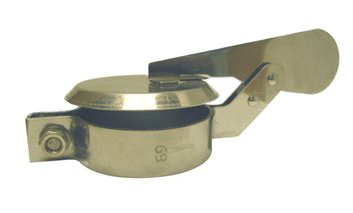AlaskaProf
Guru
- Joined
- Jun 26, 2016
- Messages
- 2,236
- Location
- US of A
- Vessel Name
- boatless, ex: Seeadler
- Vessel Make
- RAWSON 41
Idle curiosity:
How do you keep rainwater out?
I see paint buckets, etc, but not all are so protected. Is there some internal drain? Near me in Tacoma is one of the lesser Nordhavns (32?) with a very tall stack. He has an old fender with the bottom cut out, but I'm damned if I can see how he installs it up there.
How do you keep rainwater out?
I see paint buckets, etc, but not all are so protected. Is there some internal drain? Near me in Tacoma is one of the lesser Nordhavns (32?) with a very tall stack. He has an old fender with the bottom cut out, but I'm damned if I can see how he installs it up there.

